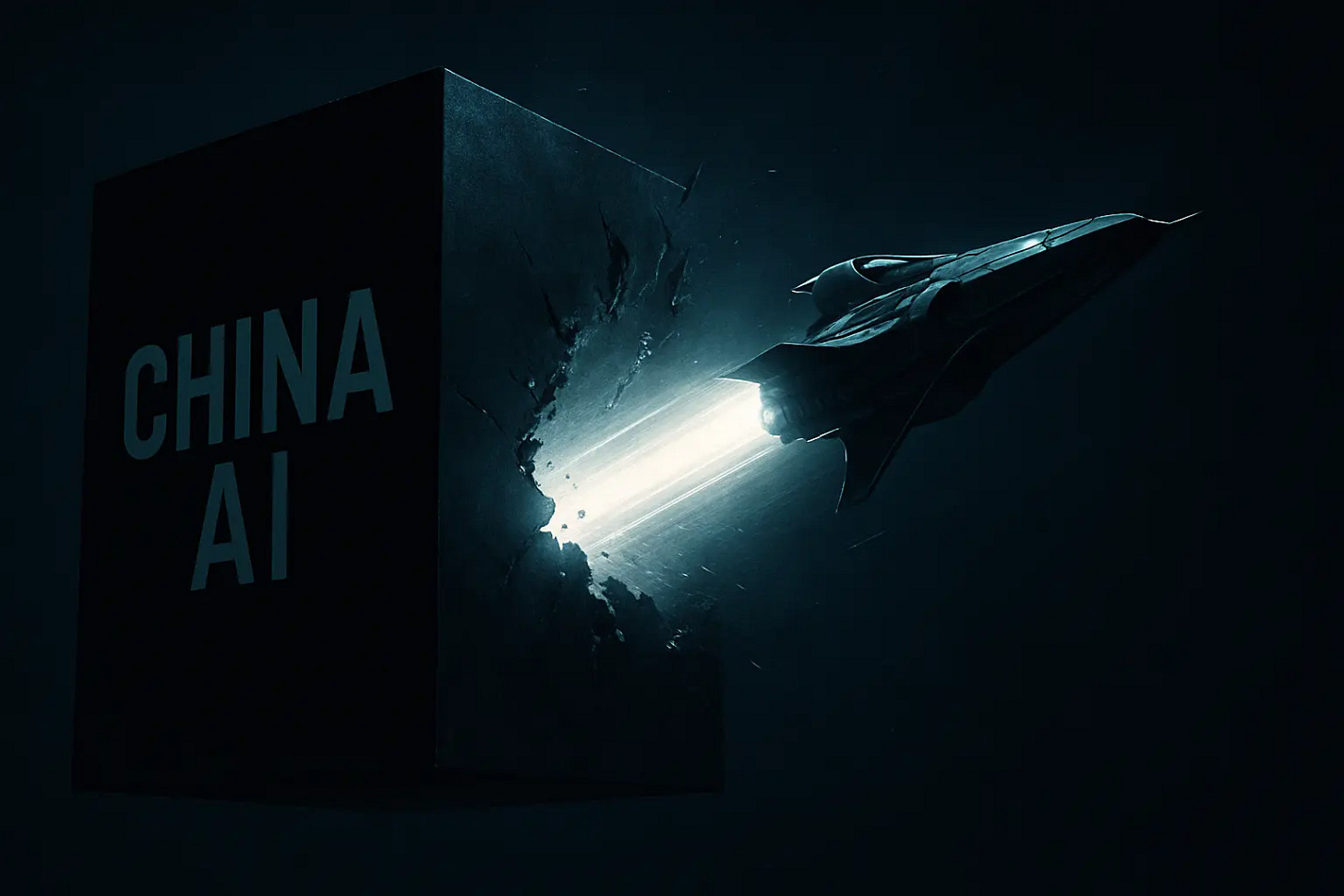Hello China Tech by Poe Zhao – Weekly insights into China’s tech revolution. I analyze how developments in Chinese AI, electric vehicles, robotics, and semiconductors are reshaping global technology landscapes. Each piece contextualizes China’s innovations within worldwide market dynamics and strategic implications.
As China’s AI industry enters a phase of painful consolidation, Moonshot AI is charting a defiant course. Its strategy—radical product focus, a bold open-source pivot, and a global tech gambit—offers not just survival tactics, but a high-risk prototype for what winning might look like.
In an AI landscape where caution is the new default, Moonshot AI is refusing to fold. As peers scale back or submit to tech giants, Moonshot is escalating its bet. The open-sourcing of its powerful Kimi K2 model isn’t merely a launch—it’s a sharp, strategic swing in a game where few can afford a misstep.
This maneuver makes Moonshot a revealing case study in China’s AI realignment. The gold rush to replicate OpenAI has cooled, replaced by geopolitical constraints and capital retreat. Moonshot’s approach—a precision wedge followed by a global feint—isn’t just bold; it’s existential. The question is no longer whether this strategy is impressive—it is—but whether it’s survivable.
Sharpening the Wedge: Owning One Use Case, Then Expanding
Moonshot didn’t aim to be everything to everyone. It focused on being indispensable at one thing: handling massive volumes of Chinese text. While competitors chased leaderboard points, Moonshot delivered a surgical solution to professionals drowning in information overload.
This was no vanity feature. By enabling input lengths of up to 2 million characters, Kimi became mission-critical to lawyers, analysts, and researchers. Tasks like summarizing contracts or parsing dense reports were no longer chores—they were where Kimi shined. The result? Viral word-of-mouth, a cult-like user base, and a seven-day retention rate of 49%—outpacing most of the field.
In a commoditizing model market, owning a 10x use case still carves out defensible territory. But dominance is fleeting. Giants like Baidu and Alibaba quickly matched long-context capabilities, turning Moonshot’s wedge from moat to minimum. The company needed a second act—and fast.
Open-Source as Flank: Escaping the Mainland Gridlock
That second act arrived in the form of Kimi K2—an MoE-based model that Moonshot immediately open-sourced. Far from altruism, this was calculated escape velocity.
By going open, Moonshot isn’t just wooing developers—it’s sidestepping a deadlocked domestic race. The strategy vaults its brand into the global AI discourse, winning attention from firms like Perplexity and independent builders worldwide. That kind of reputational lift is hard to buy, especially in a market as insular as China’s.
It’s also a clever workaround to the chip chokehold. U.S. export controls may throttle Moonshot’s domestic compute, but a globally popular open-source model can scale elsewhere—on someone else’s cloud, on someone else’s hardware. In theory, Moonshot can gain global relevance without winning local scale.
But the theory comes at a cost. Maintaining a leading open-source model is a treadmill of burn and iteration. It demands top-tier engineering, fast cycles, and relentless polish. And it doesn’t pay—at least not yet.
The Blank Page: Monetization Remains Elusive
For all its strategic finesse, Moonshot still lacks a commercial center of gravity. Innovation and buzz don’t pay the bills.
Direct-to-consumer subscriptions, OpenAI’s golden goose, have sputtered in China. User willingness to pay for software remains weak, pushing most AI firms toward enterprise sales. But that path brings its own traps—long sales cycles, endless customization, and low-margin project work.
This is the SaaS trap in its Chinese form—ambitious tech firms becoming glorified consultants. Unless Moonshot can scale a repeatable product business, even its smartest tech may erode into one-off deployments and RFP wars.
Its current API pricing is a starting point, not a strategy. The company’s survival now hinges on solving a question even harder than building a frontier model: how to monetize one.
Conclusion: Breakthrough or Beautiful Burnout?
Moonshot AI is doing what few Chinese startups dare: playing offense. Its product clarity, bold open-source move, and global positioning show real strategic agility. This is not a company retreating. It’s advancing—with precision and flair.
But the Kimi playbook is not a blueprint—it’s a tightrope. The demands are unforgiving: ship faster, monetize smarter, burn slower. Even minor launch issues, like latency bugs in Kimi K2, reveal the strain of operating at the bleeding edge.
So the question isn’t whether Moonshot’s strategy is exciting. It’s whether it’s sustainable. Is this the emergence of a new model for Chinese AI startups—nimble, globally credible, independently built? Or is it simply the most elegant path to the same old endgame: consolidation?
The answer may decide whether China can still produce true AI challengers—or if the future belongs only to giants.
About Hello China Tech
I’m Poe Zhao, and I bridge the gap between China’s rapidly evolving tech ecosystem and the global community. Through Hello China Tech, I provide twice-weekly analysis that goes beyond headlines to examine the strategic implications of China’s technological advancement.
Found this useful?
→ Share this newsletter with colleagues who need to understand China’s tech impact
→ Subscribe for free to receive every analysis:
→ Follow the conversation on 𝕏 for daily updates and additional insights
Get in touch: Have questions about China’s tech sector or suggestions for future analysis? Reply to this email – I read every message.





